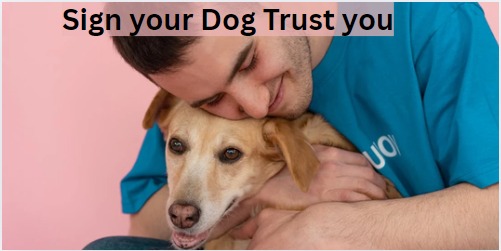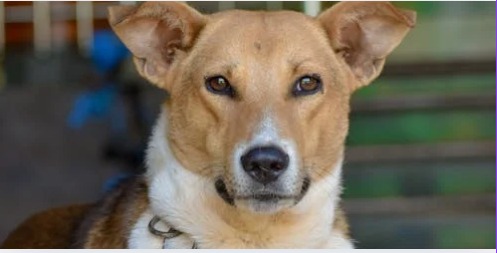Building trust with your dog is like nurturing any other relationship—it takes time, patience, and understanding. Every interaction shapes how your dog perceives you, especially in different scenarios. A dog’s experience with negative associations can make them hesitant, but with the right actions, you can help them grow in confidence. Through positive reinforcement, a dog learns that good behavior is met with a reward, not fear or punishment. Over time, they begin to listen, respond to cues, and feel comfortable and safe in your presence.
Simple things like an ear rub, a long walk, or their favorite treats and rewards reinforce this bond. Some owners even create a playlist to soothe their pets, addressing those impending questions like, “Why does my dog lean on me?” or “Why does my dog lick me—are they hungry?” When a dog stares, it’s often a deep part of the canine-human connection, a way they communicate and express their intent. Understanding their signals helps you interpret their emotions correctly and deepen your bond.
How Does Your Dog Show Signs of Trust—The Answer

Dog Locks Eyes with You
When a dog locks eyes with you and holds that gaze, it typically means she feels comfortable and unthreatened in your presence. This kind of eye contact, especially when paired with a relaxed posture, soft facial expressions, and attentive behavior, is a strong indicator of trust and affection. It’s a non-verbal way for the dog to show that she feels safe and emotionally connected. Interestingly, maintaining eye contact between a dog and a human can also trigger the release of oxytocin—commonly known as the “love hormone”—which fosters feelings of comfort and reduces hostility for both the dog and the person.
Dog Loves Staying Close to You
Your dog’s loose, bouncy body language, wagging tail, and eagerness to follow you into a room show she feels safe, happy, and secure in your presence. When she chooses to nap nearby or share your bed, it reflects deep comfort and trust, signaling that she feels relaxed around you. On the other hand, signs like a tucked tail, ears back, or avoiding eye contact may indicate separation anxiety, which could benefit from professional guidance. Even if her recall isn’t perfect, the fact that she checks in and orients toward you shows a strong bond and emotional connection.

The Dog Seeks Physical Contact
When your dog seeks physical contact—like sitting close, leaning into your touch, or letting you pet them—it’s a clear sign of comfort and trust. Behaviors such as placing their head on your lap, resting a paw on you, or exposing their belly show they feel safe and content around you. If they flinch or move away, it may suggest fear or discomfort, but when they actively seek closeness, it reflects a deep emotional bond and sense of security.
The Dog Seeks out Your Attention
A dog that trusts you will actively seek your attention, responding to your voice and tone with enthusiasm and excitement. Their eagerness to engage, listen, and follow your cues shows they associate you with positive experiences and outcomes. Even persistent attention-seeking, like whining, reflects a strong emotional bond and their belief that you genuinely care for them.
The Dog Comes Back When You Call her
When your dog returns promptly when called, it’s a strong sign of trust and a positive relationship. If you’ve consistently reinforced recall with rewards and encouragement, she’ll associate coming back with good experiences. A dog that listens and responds well shows she feels safe with you and understands that following your call leads to positive outcomes.
Your Dog Sleeps Near You
When your dog chooses to sleep near you, it’s a strong sign that they feel safe and trust you deeply. Their relaxed body language—like a wagging tail and bouncy movements—shows they’re comfortable in your presence. However, if they appear stiff, with ears back or tail tucked, they may still be adjusting and need more reassurance.
Dog Pays Attention to What You Say
A dog that pays close attention to your voice and tone shows a solid bond and mutual respect. Quick responses to your calls or instructions reflect trust and positive communication. This attentiveness, paired with affection and loyalty, highlights the deep connection you’ve built through consistent and loving interaction.

How to Build Trust with Your Dog?
- Spend time together: Build a happy relationship by spending quality time with your dog. Take walks, play games, and hang out. This helps your dog feel comfortable and secure in their environment.
- Be consistent: Consistency with your cues and expectations makes your dog feel prepared and confident. Reliability helps your dog understand what to expect from you, building trust over time.
- Respect their needs: Acknowledge your dog’s needs and give them choices. Whether it’s providing space or allowing them to retreat to another room, showing respect for their desires strengthens the bond.
- Use positive reinforcement: Rewarding your dog with treats or affection when they display good behavior builds trust. Avoid using punishment or aversive tools, as they can damage your relationship.
- Learn body language: Understanding your dog’s body language, such as tail wags or stress signals, helps you act quickly to advocate for their well-being and keep them safe and healthy.
- Be patient: Building trust takes time, so be patient with your dog. If your dog is feeling uncomfortable or scared, allow them to adjust at their own pace. This shows your dog that you respect their needs and emotions.
- Allow communication: Encourage your dog to express themselves. Pay attention to their body language and respond accordingly. This will help you understand what makes them happy or unwell, which boosts trust.
- Avoid unpredictability: Avoid being erratic or unpredictable in your actions. Unreliable behavior can cause stress and confusion, making it harder for your dog to feel safe and secure. Predictable routines help your dog know what to expect, creating a stable environment.
What To Do If Your Dog Doesn’t Trust You?
- Spend time together: Be patient and give your dog time to feel comfortable. Build a bond by engaging in activities that make them feel safe and loved.
- Use positive reinforcement: Reward your dog for good behavior. This will help them understand that good things happen when they listen and respond to your cues.
- Stay calm and patient: If your dog doesn’t respond right away, avoid frustration. Instead, remain attuned to their needs and adjust your approach with a calm tone and voice.
- Seek professional help: If you’re struggling to build trust, consider reaching out to a trainer or consultant for guidance on how to improve communication and behavior.
Final Thoughts
Building trust with your dog is a gradual process that requires patience, consistency, and understanding. By spending quality time together, using positive reinforcement, and respecting their needs, you strengthen the bond over time. Paying attention to their body language and being predictable in your actions also helps your dog feel secure. If trust is lacking, stay calm, patient, and consider professional help to guide you through the process. With dedication and love, you can foster a deep and lasting connection with your dog, ensuring a happy and trusting relationship.
FAQs
How Can I Tell If My Dog Is Bonded to Me?
Your dog shows trust through eye contact, being relaxed, snuggling your stuff, and seeking affection. Excited to see you, they also enjoy listening to you, and a strong human-dog bond forms with training sessions, playtime, and massages.
What Can Make a Dog Not Trust You?
A dog’s lack of socialization, especially as a puppy, can hinder trust. Exposed to unfamiliar sights, sounds, or past traumatic events like abuse or fireworks, they may develop fear. Genetics can also make dogs more predisposed to be fearful, affecting their ability to connect.
How to Tell If Your Dog is Protecting You?
If your dog stands alertly and focuses on a person or animal, it could be sensing a perceived threat. They may bark, growl, or position themselves between you and the threat, returning to normal once they feel safe.
Can My Dog Sense That I Love Him?
Yes, dogs can sense your love through their ability to pick up on emotions and body language, even though they don’t speak the same language. Your furry friend can feel loved, and their bond with you often mirrors human affection. They may not express it in words, but they understand your love.
